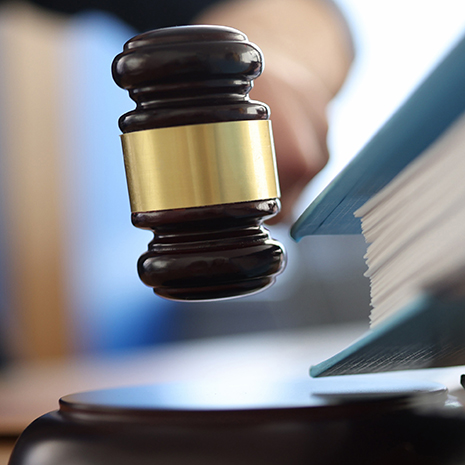Best Federal Appeal Lawyers: Achieving Justice in Federal Appeals
Best Federal Appeal Lawyers: Achieving Justice in Federal Appeals
Blog Article
Demystifying the Refine of Federal Appeals: What You Required to Know
Browsing the elaborate realm of federal charms can often look like going across undiscovered waters for those not familiar with the process. Recognizing the nuances of appellate court jurisdiction, the ins and outs of submitting a notification of appeal, presenting a compelling quick, and making a convincing dental argument are important parts that can significantly influence the result of a situation. By untangling the layers of intricacy bordering federal appeals, individuals can obtain a clearer insight right into the mechanisms that govern this essential phase of the lawful system.
Comprehending Federal Appeals Process
Looking into the detailed world of the federal allures process introduces a structured and systematic trip with the judicial system. Federal allures work as an important system for evaluating decisions made by lower courts. Recognizing this procedure is essential for any person involved in legal procedures at the federal degree.
The procedure typically begins with an event disappointed with a lower court's ruling filing a notification of allure. This sets off a testimonial by a higher court, where a panel of judges evaluates the lawful disagreements provided by both celebrations. Briefs detailing the lawful reasoning behind each party's position are sent, and oral arguments might be heard to clear up intricate problems.
The appellate court's choice is based on a thorough assessment of the reduced court's procedures and the arguments offered. The judges do not review truths however concentrate on whether lawful errors occurred that affected the lower court's decision. As soon as the appellate court gets to a decision, it can affirm, reverse, remand, or change the reduced court's judgment, providing clearness and finality to the legal conflict. Comprehending this procedure is essential for browsing the intricacies of federal appeals efficiently.
Appellate Court Territory Clarified
Appellate court territory refers to the range of cases that a specific appellate court has the power to evaluate and determine upon. Unlike test courts that listen to situations for the initial time, appellate courts are restricted to evaluating choices made by lower courts.
Appellate courts have territory over particular kinds of situations, typically those entailing legal errors, step-by-step concerns, or concerns of regulation instead than accurate conflicts. The jurisdiction of appellate courts is usually outlined in statutes and legislations that govern the court system. Understanding appellate court jurisdiction is critical for events entailed in the appeals procedure as it determines whether a situation is qualified for testimonial and the level to which the appellate court can intervene in the reduced court's decision.
Filing a Notification of Appeal
The initial step in beginning the federal allures procedure entails filing a Notification of Allure with the appropriate appellate court. This important paper formally informs the court and the various other parties associated with the instance that the appealing celebration plans to look for an evaluation of the lower court's choice. Submitting a Notification of Allure is a rigorous procedural requirement that sets the appellate process moving.
When preparing the Notification of Charm, it is crucial to make certain compliance with the details rules and guidelines of the appropriate appellate court. federal crime lawyer. The document should generally consist of information such as the situation name, the reduced court's name, the date of the judgment being appealed, and a concise statement indicating the premises for the charm

Instruction and Oral Disagreement
In the appellate procedure, presenting composed briefs and taking part in oral debates play critical roles in promoting for the appealing party's placement before the appellate court. Briefs are thorough lawful files that describe the celebrations' disagreements, lawful authorities, and evaluation supporting their positions. These created entries offer the court with a comprehensive understanding of the truths of the situation, the relevant regulation, and why the appealing event believes the lower court's choice must be overturned.
Following the submission and evaluation of the briefs, oral arguments supply the events a possibility to more clarify their placements, resolve any type of questions the appellate courts may have, and emphasize bottom lines from their created briefs. Dental arguments are an opportunity for the lawyers to encourage the judges with spoken advocacy and actions to queries from the bench.
Both the composed briefs and dental debates are essential components of the appellate process, enabling celebrations to offer their case extensively and compellingly before the appellate court. - federal appeal attorneys
Obtaining the Appellate Court Decision
Upon completion of dental debates and entry of created briefs, the following critical phase in the appellate process involves awaiting the crucial judgment from the appellate court. This duration of anticipation can be loaded with a mix of anxiety and wish for parties associated with the allure. The appellate court's choice is generally provided in a composed format and describes the court's conclusions on the lawful issues presented, the reasoning behind their decision, and the judgment made. The moment structure for obtaining the appellate court's decision can vary, but courts make every effort to give prompt resolutions. Once the choice is released, celebrations have to meticulously assess the court's judgment to comprehend the end result and establish any further actions that may be needed. Whether the appellate court affirms, turns around, or remands the reduced court's decision, understanding the effects of the judgment is essential for all parties associated with the appellate process. As a result, quickly evaluating and comprehending the appellate court's decision is important in navigating the next steps in the lawful procedures.
Conclusion
Recognizing the best federal appeal lawyer in las vegas appellate court territory, submitting a notice of charm, preparing briefs, and providing oral arguments are all vital elements of this procedure. Inevitably, getting the appellate court choice can offer clearness and resolution to legal conflicts.
As we progress from understanding the federal appeals process to exploring the ins and outs of appellate court territory, a basic facet comes to light relating to the authority and limitations of these higher courts in the lawful landscape. Appellate court jurisdiction refers to the scope of situations that a particular appellate court has the power to decide and examine upon. Unlike test courts that hear cases for the initial time, appellate courts are limited to examining decisions made by reduced courts. Comprehending appellate court jurisdiction is crucial for celebrations included in the allures procedure as it figures out whether an instance is eligible for testimonial and the extent to which the appellate court can intervene in the reduced court's choice.

Report this page